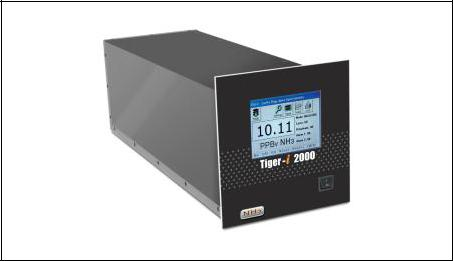
Ammonia in the atmosphere results from a number of anthropogenic activities primarily associated with intensive agriculture. This includes the rearing of livestock, such as poultry and pigs, and processes relating to arable farming. In addition to causing problems at the local level, bad odors and adverse effects on animal health, ammonia contributes to the formation of airborne particulate matter. The transport of this secondary pollution, as well as ammonia itself, can have a negative impact on air quality many miles from the source.
The presence of ammonia at ppm levels has an injurious effect on contained animals and raises concerns with respect to animal welfare and negative effects on production. Atmospheric ammonia causes respiratory problems in healthy animals, resulting in illness and potential deaths.
CW-CRDS for Ammonia Emissions Monitoring Tiger Optics Tiger-i range has been developed for the measurement of trace level gases in samples at ambient pressure, via the use of a vacuum pump to introduce the sample to the analyzer. All Tiger Optics instruments are based on CW-CRDS.
The Tiger-i 2000 NH3 for emissions monitoring offers a detection limit of 8 ppb, with a dynamic range up to 40 ppm. It accurately measures close to an emission source, but is sensitive enough to locate emissions at a distance.
Tiger Optics CW-CRDS analyzers bring significant benefits to emissions monitoring, including:
- Accuracy traceable to the world’s major national reference labs
- Sub-ppb detection capability
- No zero or span required
- No periodic sensor replacement/maintenance
- Nano-second speed of response
- Wide dynamic range
Documentation
 Ammonia Emissions Monitoring
Ammonia Emissions Monitoring